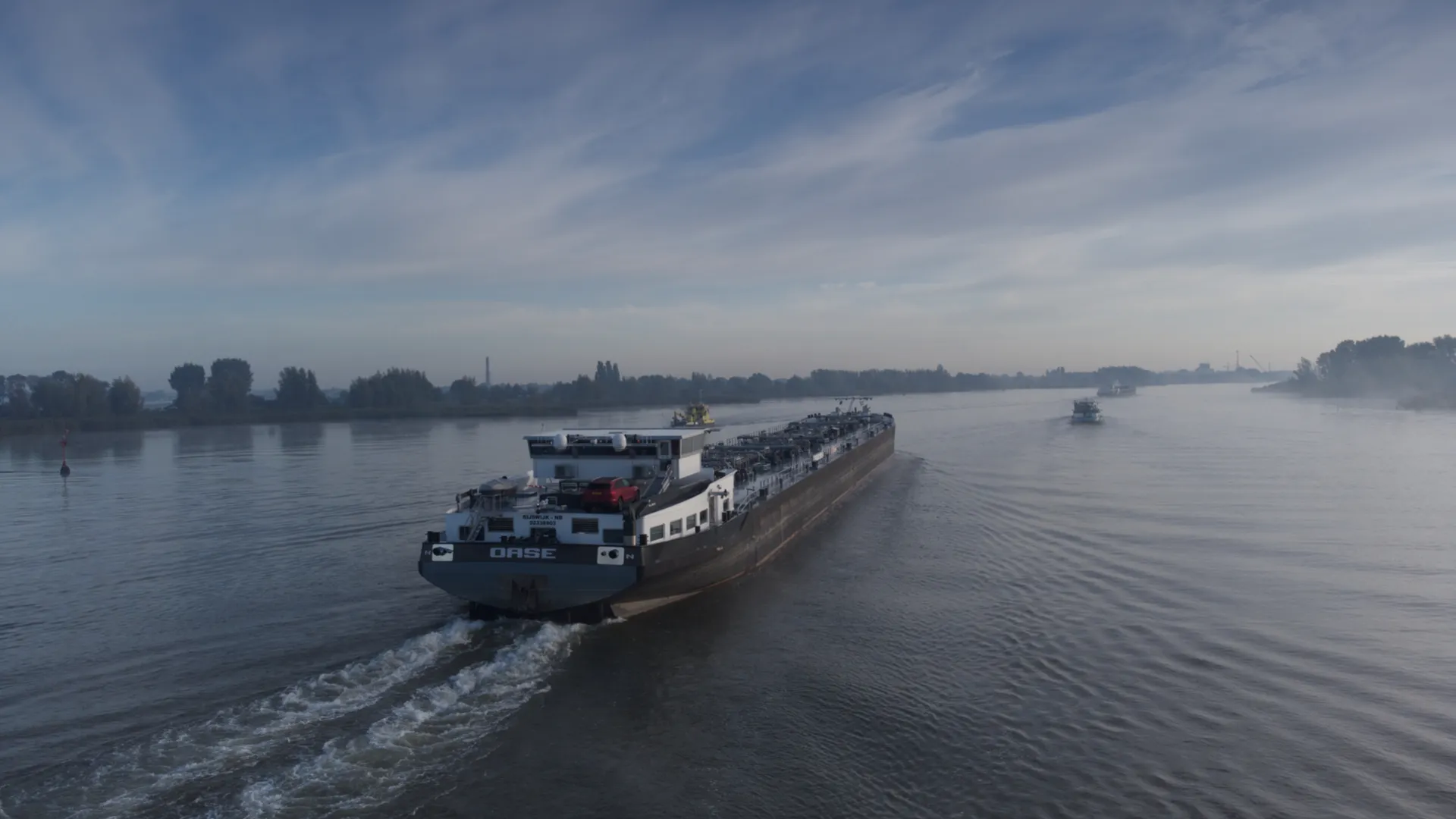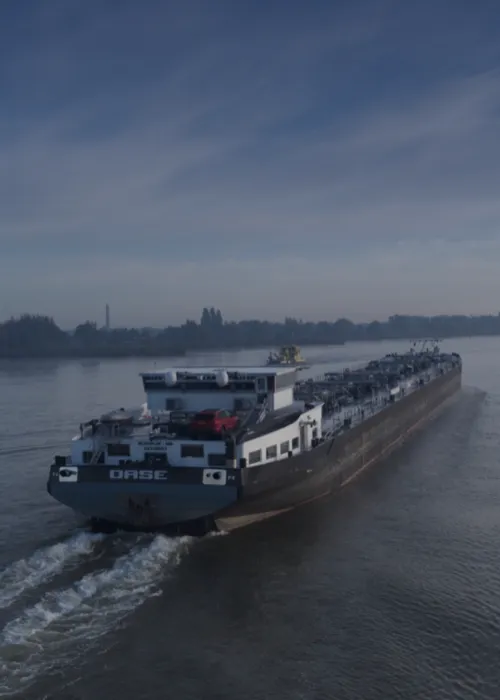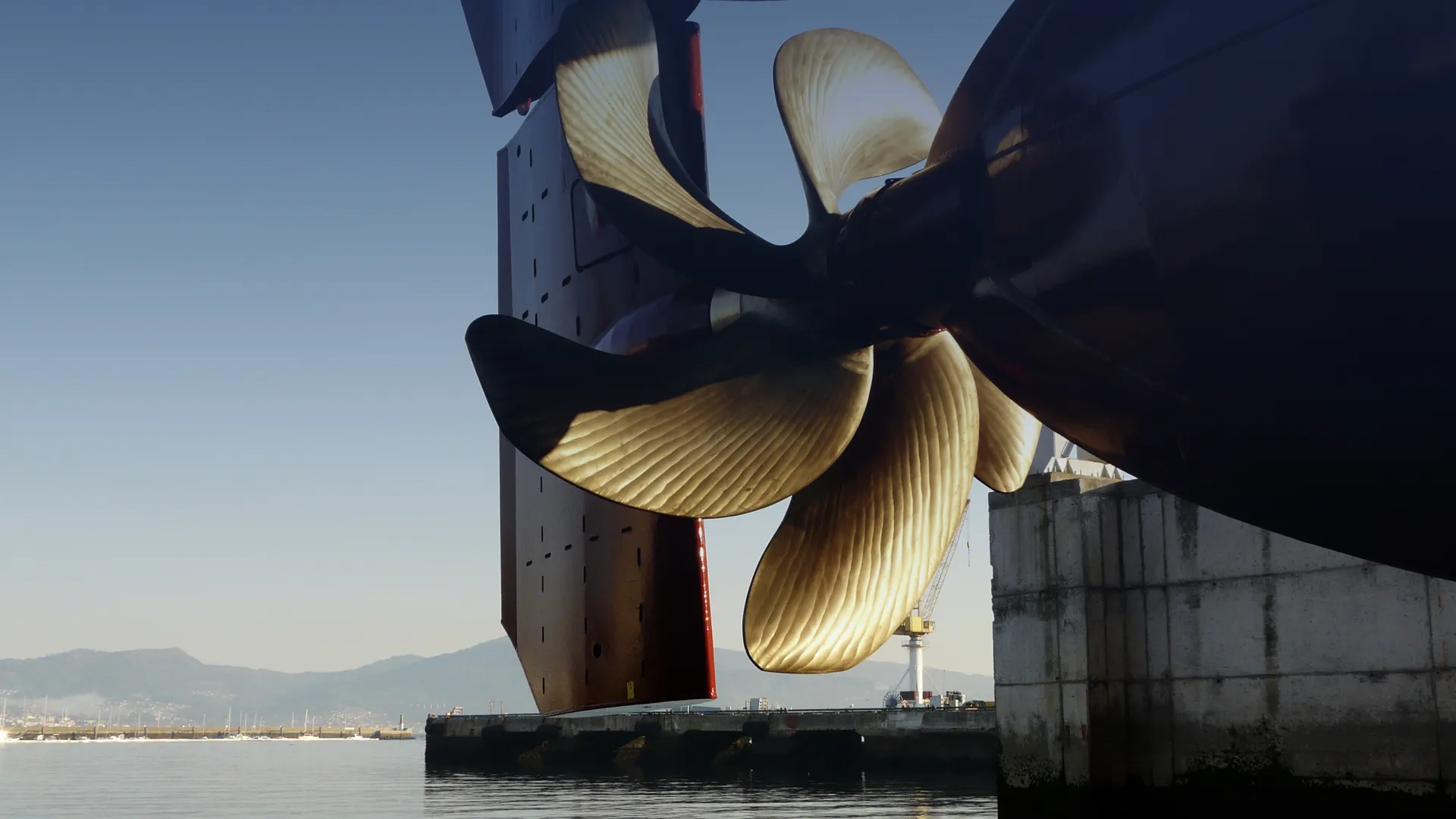
Projects
Since 2013, we and our partners have been involved in a wide range of projects within the maritime sector. We have supported various shipping companies with an extensive array of services and products, primarily focusing on the following themes: consulting on sustainable ship practices, compliance with maritime environmental laws and regulations, energy-saving and emission-reducing technologies, and efficient propulsion.

Projects
Since 2013, we and our partners have been involved in a wide range of projects within the maritime sector.

Sustainable Consulting
We have guided shipping companies in developing sustainability plans for both the short and long term. We addressed critical questions such as: “How can we reduce nitrogen oxide (NOx) emissions from ships during the construction of wind farms in the North Sea and inland waters?” In addition to detailing the proposed technology and the emission standards achievable with it, we provided this client with insights into the expected costs and feasibility across various applications in inland and maritime shipping. These findings were summarized in a report. Custom studies like these are part of our support in developing a roadmap towards emission-free and climate-neutral sailing.
Maritime Compliance
As a shipping company, shipowner, or ship chandler, you face a wide range of maritime environmental laws and regulations. Examples include the Ship Energy Efficiency Management Plan (SEEMP), the Energy Efficiency Existing Ship Index (EEXI), the Carbon Intensity Indicator (CII), and the regulation on ship recycling (IHM).
Over the years, we have assisted numerous companies in navigating this complex regulatory landscape together with our partners. Practical examples include updating the SEEMP for existing government vessels, calculating EEXI and CII values for existing coastal ships, and supporting multiple ship chandlers in providing the necessary IHM documentation for their clients.
New services relate to simplifying sustainability reporting (ESG), conducting Life Cycle Assessments (LCAs), and compliance with chemical regulations.
Energy Saving
We have conducted extensive research into energy savings on ships and, with our partners, explored various solutions. Thanks to this collaboration, we have seen new technologies become a reality. Examples of these innovations include Energy Saving Devices (ESDs), a wind-assisted ship propulsion system, and a waste heat recovery system.
The first Energy Saving Device (ESD) for a coastal vessel, a Pre-Swirl Stator (PSS), has now been installed. Similarly, a wind-assisted propulsion system for ships has recently been implemented on an existing coastal ship. Our experience with waste heat recovery installations spans a longer period, and together with our specialized partner, we have helped many shipowners and operators convert waste heat into electrical energy on both existing and new vessels.
Emission Reduction
Our product range in the field of energy saving is primarily focused on reducing carbon dioxide (CO2) emissions through the use of innovative technologies, both above and below the waterline. At the same time, we are active in emission reduction, specifically targeting the reduction of nitrogen oxide (NOx), particulate matter (PM), and particle number (PN) emissions for both existing and new ships.
Over the years, we have assisted various companies in exploring the feasibility and implementation of relevant technologies with our partner. An example of this is SCR catalysts and diesel particulate filters, which can reduce these emissions to Stage V levels. This effort has particularly focused on making older ships, some of which are over 50 years old, more sustainable.
Propulsion
Over the years, we, in collaboration with our partners, have supported various companies from different sectors of the maritime industry in the field of efficient propulsion. This includes studies for ship performance optimization and the implementation of essential drivetrain components such as CFD-optimized ship propellers and nozzles to propel ships more efficiently. In just a few years, our partners have already delivered more than 150 of these propulsion components.

Sustainable Consulting
We have guided shipping companies in developing sustainability plans for both the short and long term.
We addressed critical questions such as: “How can we reduce nitrogen oxide (NOx) emissions from ships during the construction of wind farms in the North Sea and inland waters?”
In addition to detailing the proposed technology and the emission standards achievable with it, we provided this client with insights into the expected costs and feasibility across various applications in inland and maritime shipping.
These findings were summarized in a report. Custom studies like these are part of our support in developing a roadmap towards emission-free and climate-neutral sailing.
Maritime Compliance
As a shipping company, shipowner, or ship chandler, you face a wide range of maritime environmental laws and regulations.
Examples include the Ship Energy Efficiency Management Plan (SEEMP), the Energy Efficiency Existing Ship Index (EEXI), the Carbon Intensity Indicator (CII), and the regulation on ship recycling (IHM).
Over the years, we have assisted numerous companies in navigating this complex regulatory landscape together with our partners.
Practical examples include updating the SEEMP for existing government vessels, calculating EEXI and CII values for existing coastal ships, and supporting multiple ship chandlers in providing the necessary IHM documentation for their clients.
New services relate to simplifying sustainability reporting (ESG), conducting Life Cycle Assessments (LCAs), and compliance with chemical regulations.
Energy Saving
We have conducted extensive research into energy savings on ships and, with our partners, explored various solutions. Thanks to this collaboration, we have seen new technologies become a reality.
Examples of these innovations include Energy Saving Devices (ESDs), a wind-assisted ship propulsion system, and a waste heat recovery system.
The first Energy Saving Device (ESD) for a coastal vessel, a Pre-Swirl Stator (PSS), has now been installed. Similarly, a wind-assisted propulsion system for ships has recently been implemented on an existing coastal ship.
Our experience with waste heat recovery installations spans a longer period, and together with our specialized partner, we have helped many shipowners and operators convert waste heat into electrical energy on both existing and new vessels.
Emission Reduction
Our product range in the field of energy saving is primarily focused on reducing carbon dioxide (CO2) emissions through the use of innovative technologies, both above and below the waterline.
At the same time, we are active in emission reduction, specifically targeting the reduction of nitrogen oxide (NOx), particulate matter (PM), and particle number (PN) emissions for both existing and new ships.
Over the years, we have assisted various companies in exploring the feasibility and implementation of relevant technologies with our partner.
An example of this is SCR catalysts and diesel particulate filters, which can reduce these emissions to Stage V levels. This effort has particularly focused on making older ships, some of which are over 50 years old, more sustainable.
Propulsion
Over the years, we, in collaboration with our partners, have supported various companies from different sectors of the maritime industry in the field of efficient propulsion.
This includes studies for ship performance optimization and the implementation of essential drivetrain components such as CFD-optimized ship propellers and nozzles to propel ships more efficiently.
In just a few years, our partners have already delivered more than 150 of these propulsion components.

